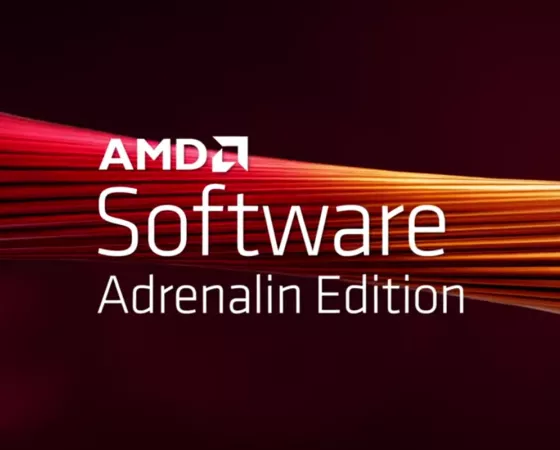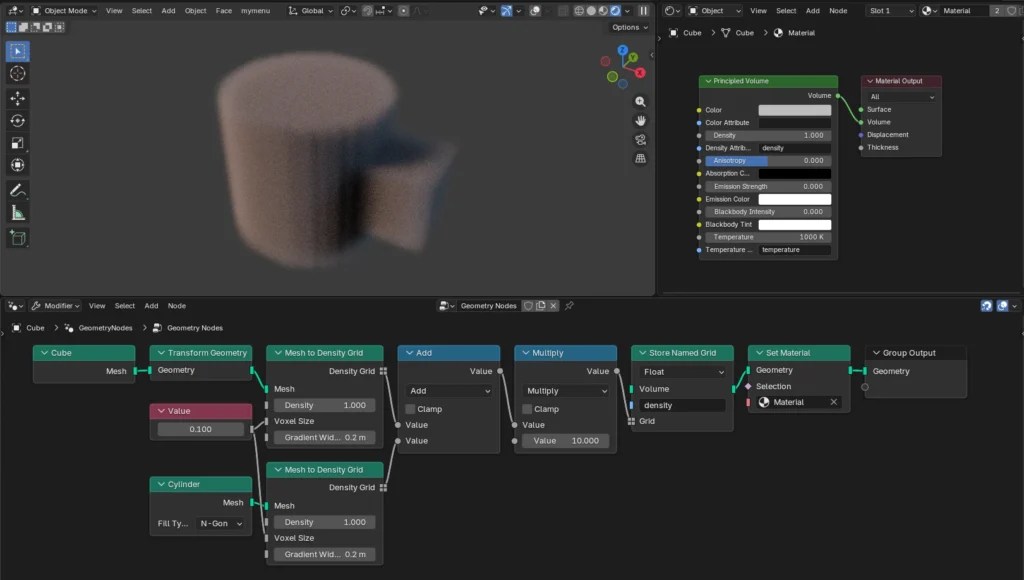Lyft Plans Fleet of Hundreds of Tensor Robocars From 2027
Read more of this story at Slashdot.
Read more of this story at Slashdot.
Read more of this story at Slashdot.
Read more of this story at Slashdot.
Read more of this story at Slashdot.
Read more of this story at Slashdot.
Read more of this story at Slashdot.
Read more of this story at Slashdot.
Read more of this story at Slashdot.
Read more of this story at Slashdot.
 Si NVIDIA a sorti dès le 1er octobre 2025 ses pilotes graphiques pour Battlefield 6, du côté d'AMD l'attente aura été longue ! C'est seulement 30 minutes avant la disponibilité du jeu, lancé pour rappel à 17h00 en France, que la firme mettait en ligne une page avec des pilotes graphiques en version...
Si NVIDIA a sorti dès le 1er octobre 2025 ses pilotes graphiques pour Battlefield 6, du côté d'AMD l'attente aura été longue ! C'est seulement 30 minutes avant la disponibilité du jeu, lancé pour rappel à 17h00 en France, que la firme mettait en ligne une page avec des pilotes graphiques en version...
Read more of this story at Slashdot.
 Battlefield 6 fait son grand plouf aujourd'hui, cependant nous avons pu y mettre la main dessus avant pour vous proposer en temps et en heure un Performance Test. Cette idée a également traversé la tête de VCG qui a également pu réaliser le sien en vidéo. Après avoir testé plusieurs cartes graphique...
Battlefield 6 fait son grand plouf aujourd'hui, cependant nous avons pu y mettre la main dessus avant pour vous proposer en temps et en heure un Performance Test. Cette idée a également traversé la tête de VCG qui a également pu réaliser le sien en vidéo. Après avoir testé plusieurs cartes graphique...
Read more of this story at Slashdot.
Read more of this story at Slashdot.
Elle arrive avec une semaine de retard, mais la bêta de Blender 5.0 est disponible au téléchargement. Comme le laisse supposer le numéro de version, il s’agit d’une mouture majeure, avec d’importantes nouveautés.
Parmi les principaux apports, il faut déjà signaler l’arrivée d’ACES 1.3 et 2.0. ACES, pour Academy Color Encoding System, est un workflow conçu pour préserver la fidélité des couleurs à travers l’ensemble de la chaine de production.

Signalons également des améliorations pour Cycles, qui gagne par exemple une capacité Thin Film sur surface métallique et un nouvel algorithme Volumetrics. On peut citer également la gestion du multi-bounce dans SSS Random Walk, permettant de supprimer les lignes noires qui apparaissent entre les objets qui se croisent. Les nœuds géométriques et de shaders ont reçu des Bundles et Closures. D’autres nouveautés ont trait à l’interface, comme la disponibilité des assets dans le Compositor. La liste des changements est particulièrement longue.
Cette bête est « feature complete », ce qui signifie que toutes les fonctions prévues pour la version finale sont en place. L’équipe de développement se concentre désormais sur la correction des bugs et d’éventuelles optimisations. Blender 5.0 est attendu pour la mi-novembre. La branche de développement active, quant à elle, est passée sur la version 5.1.

Longtemps brocardée pour ses retards, surcoûts et pannes à répétition, la plateforme nationale des interceptions judiciaires donnerait presque satisfaction à ses 70 000 utilisateurs. Ils pointent cependant ses problèmes d’ergonomie, de fluidité et de fonctionnalités. Initialement externalisée auprès de Thales, des travaux seraient prévus afin d’en internaliser l’hébergement, sans plus de précisions.
Dans un rapport intitulé « Maîtriser les frais de justice pour mieux rendre la justice », la commission des finances du Sénat constate que « leur coût a été de 716 millions d’euros 2024, en hausse de 51,2 pour cent par rapport à 2013 », alors que l’inflation n’a été que de 19,1 % dans le même temps.
Dans un premier article, nous sommes revenus sur les différents types de « frais d’enquête », les raisons de cette inflation budgétaire, pourquoi certains experts devaient attendre « plusieurs mois, voire plusieurs années », avant de recouvrir les « milliers, voire plusieurs dizaines de milliers d’euros » que l’État leur doit, le coût des expertises informatiques et le fait que le droit français et européen interdit le remplacement des traducteurs et interprètes humains par des IA.
Ce second article revient plus particulièrement sur les frais de justice en matière d’interceptions judiciaires, ainsi que sur les économies et problèmes associés à la plateforme nationale des interceptions judiciaires (PNIJ).
Comme indiqué dans le premier article, ces derniers représentent 11,3 % de la totalité des frais de justice. Ils n’ont pourtant augmenté que de 1,4 % depuis 2019, contrairement à de nombreux autres postes budgétaires qui, à l’instar des expertises médicales, ont explosé de +- 50 %.


En 2024, le coût des interceptions judiciaires a été de 81,3 millions d’euros, contre 93 millions en 2017, soit une baisse moyenne de 2 % par an. Ces 81 millions représentent toutefois une somme « très supérieure à celle prévue en début d’exercice », qui était de 61,1 millions d’euros, soit + 32,6 %, relève le rapporteur.

Cet écart, précise-t-il, peut s’expliquer par le « caractère relativement imprévisible » des dépenses en interception judiciaire, qui dépend du nombre et de la nature des enquêtes conduites en cours d’année.
La justice étant « passée d’une culture de la preuve par l’aveu à une culture de la preuve matérielle ou scientifique », le nombre des actes prescrits au cours d’une enquête par les juges ou les officiers de police judiciaire a logiquement augmenté, « en particulier s’agissant d’actes coûteux » :
« Il a ainsi été indiqué au rapporteur spécial que le juge, aujourd’hui, s’attend, dans de nombreuses affaires, à trouver dans son dossier des preuves tirées d’interceptions judiciaires ou de l’exploitation du téléphone portable de la victime. »
En l’espèce, l’enquête initiée pour retrouver Mohamed Amra (le narcotrafiquant dont l’évasion, suite à l’attaque d’un fourgon pénitentiaire au péage d’Incarville, avait valu à deux surveillants d’être exécutés), avait reposé sur une utilisation « très importante » des données issues des interceptions judiciaires.
Et ce, d’autant qu’aux traditionnelles écoutes téléphoniques, s’ajoutent « de plus en plus » le recueil des données de connexion et de géolocalisation des criminels, « car les communications vocales sont souvent cryptées (sic) de nos jours », précise le rapporteur.
L’évolution des dépenses peut aussi s’expliquer par des circonstances conjoncturelles, relève le rapporteur pour qui le « creux » constaté en 2022 « semble lié aux incertitudes rencontrées cette année-là sur le régime d’accès aux données de connexion, qui pourrait représenter un risque dans les années à venir pour la conduite des enquêtes ».
Elle arrive avec une semaine de retard, mais la bêta de Blender 5.0 est disponible au téléchargement. Comme le laisse supposer le numéro de version, il s’agit d’une mouture majeure, avec d’importantes nouveautés.
Parmi les principaux apports, il faut déjà signaler l’arrivée d’ACES 1.3 et 2.0. ACES, pour Academy Color Encoding System, est un workflow conçu pour préserver la fidélité des couleurs à travers l’ensemble de la chaine de production.

Signalons également des améliorations pour Cycles, qui gagne par exemple une capacité Thin Film sur surface métallique et un nouvel algorithme Volumetrics. On peut citer également la gestion du multi-bounce dans SSS Random Walk, permettant de supprimer les lignes noires qui apparaissent entre les objets qui se croisent. Les nœuds géométriques et de shaders ont reçu des Bundles et Closures. D’autres nouveautés ont trait à l’interface, comme la disponibilité des assets dans le Compositor. La liste des changements est particulièrement longue.
Cette bête est « feature complete », ce qui signifie que toutes les fonctions prévues pour la version finale sont en place. L’équipe de développement se concentre désormais sur la correction des bugs et d’éventuelles optimisations. Blender 5.0 est attendu pour la mi-novembre. La branche de développement active, quant à elle, est passée sur la version 5.1.
 On voit régulièrement les fabricants de cartes graphique jouer au jeu de "celui qui a la plus courte" en sortant des cartes à un seul ventilateur axial, mais moins souvent à "celui qui a la plus fine". Il nous a ainsi semblé intéressant de vous présenter la GALAX GeForce RTX 5060 Ti MAX, ne serait-...
On voit régulièrement les fabricants de cartes graphique jouer au jeu de "celui qui a la plus courte" en sortant des cartes à un seul ventilateur axial, mais moins souvent à "celui qui a la plus fine". Il nous a ainsi semblé intéressant de vous présenter la GALAX GeForce RTX 5060 Ti MAX, ne serait-...